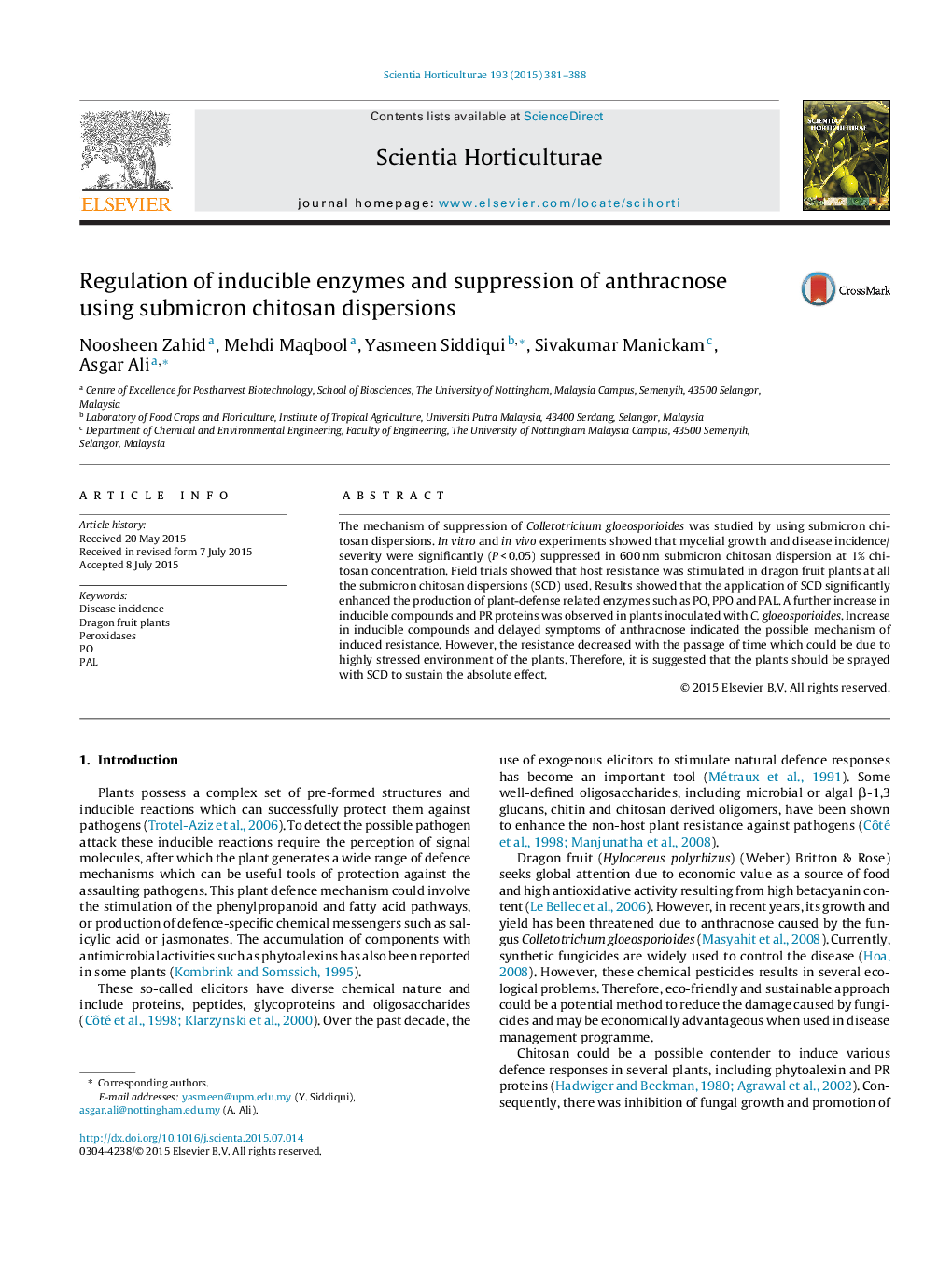| Article ID | Journal | Published Year | Pages | File Type |
|---|---|---|---|---|
| 4566221 | Scientia Horticulturae | 2015 | 8 Pages |
•600 nm droplets of 1.0% chitosan reduced disease more effectively.•600 nm droplets of 1.0% chitosan showed highest activity of peroxidases.•200 nm droplets of 1.0% chitosan penetrated more easily in the plant tissues.
The mechanism of suppression of Colletotrichum gloeosporioides was studied by using submicron chitosan dispersions. In vitro and in vivo experiments showed that mycelial growth and disease incidence/ severity were significantly (P < 0.05) suppressed in 600 nm submicron chitosan dispersion at 1% chitosan concentration. Field trials showed that host resistance was stimulated in dragon fruit plants at all the submicron chitosan dispersions (SCD) used. Results showed that the application of SCD significantly enhanced the production of plant-defense related enzymes such as PO, PPO and PAL. A further increase in inducible compounds and PR proteins was observed in plants inoculated with C. gloeosporioides. Increase in inducible compounds and delayed symptoms of anthracnose indicated the possible mechanism of induced resistance. However, the resistance decreased with the passage of time which could be due to highly stressed environment of the plants. Therefore, it is suggested that the plants should be sprayed with SCD to sustain the absolute effect.
Graphical abstractFigure optionsDownload full-size imageDownload as PowerPoint slide
